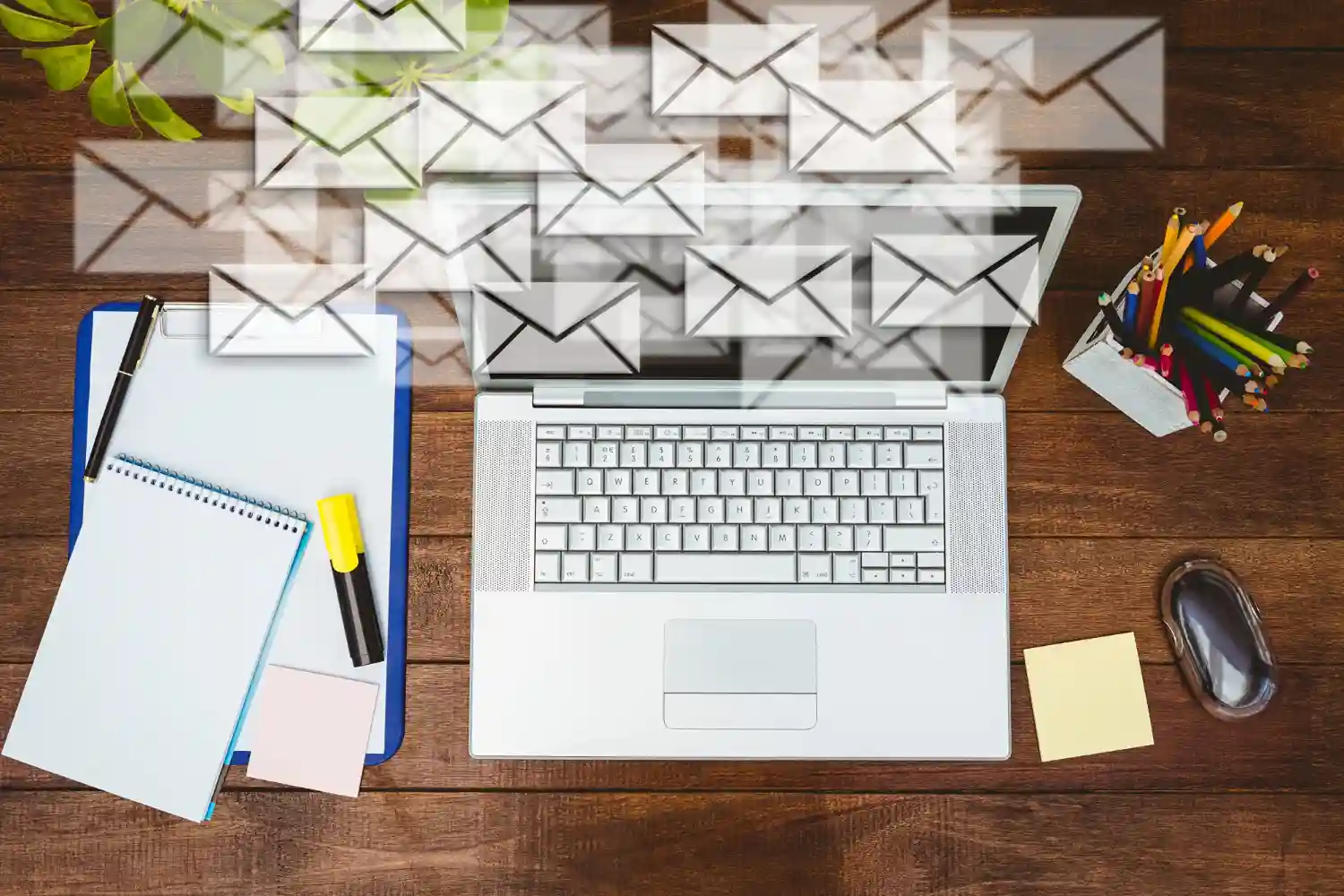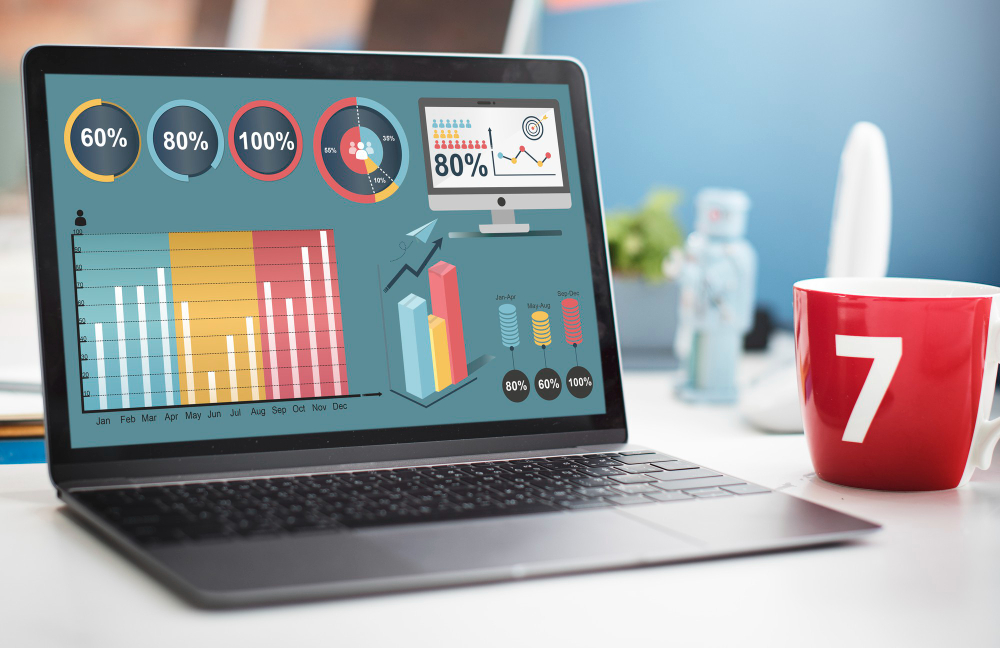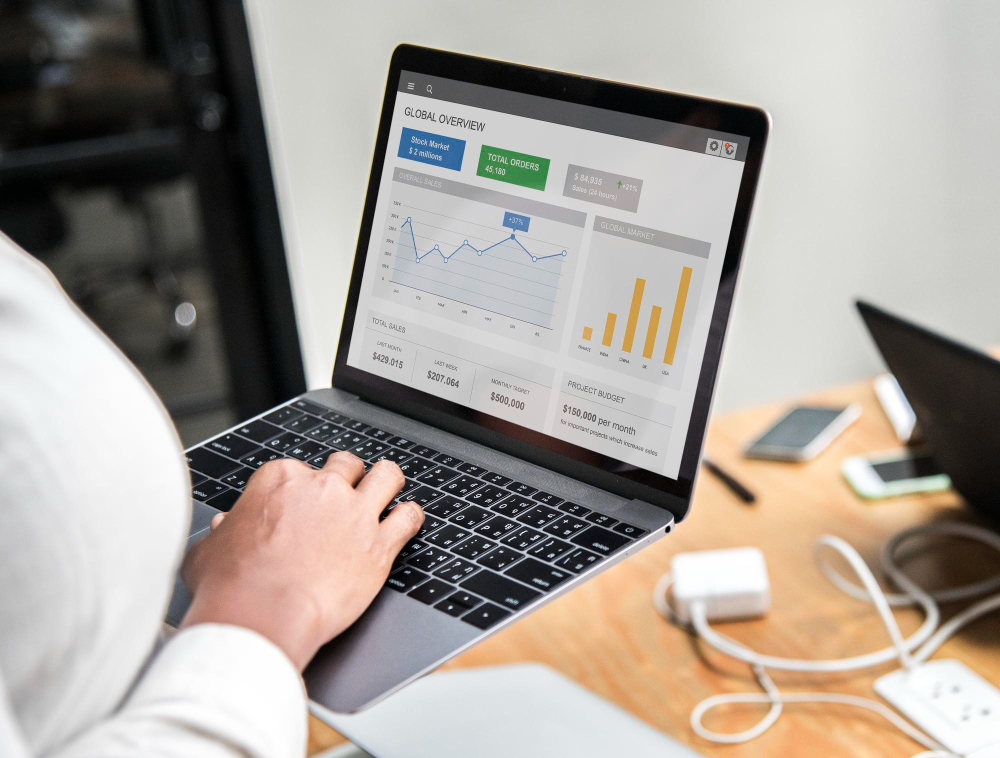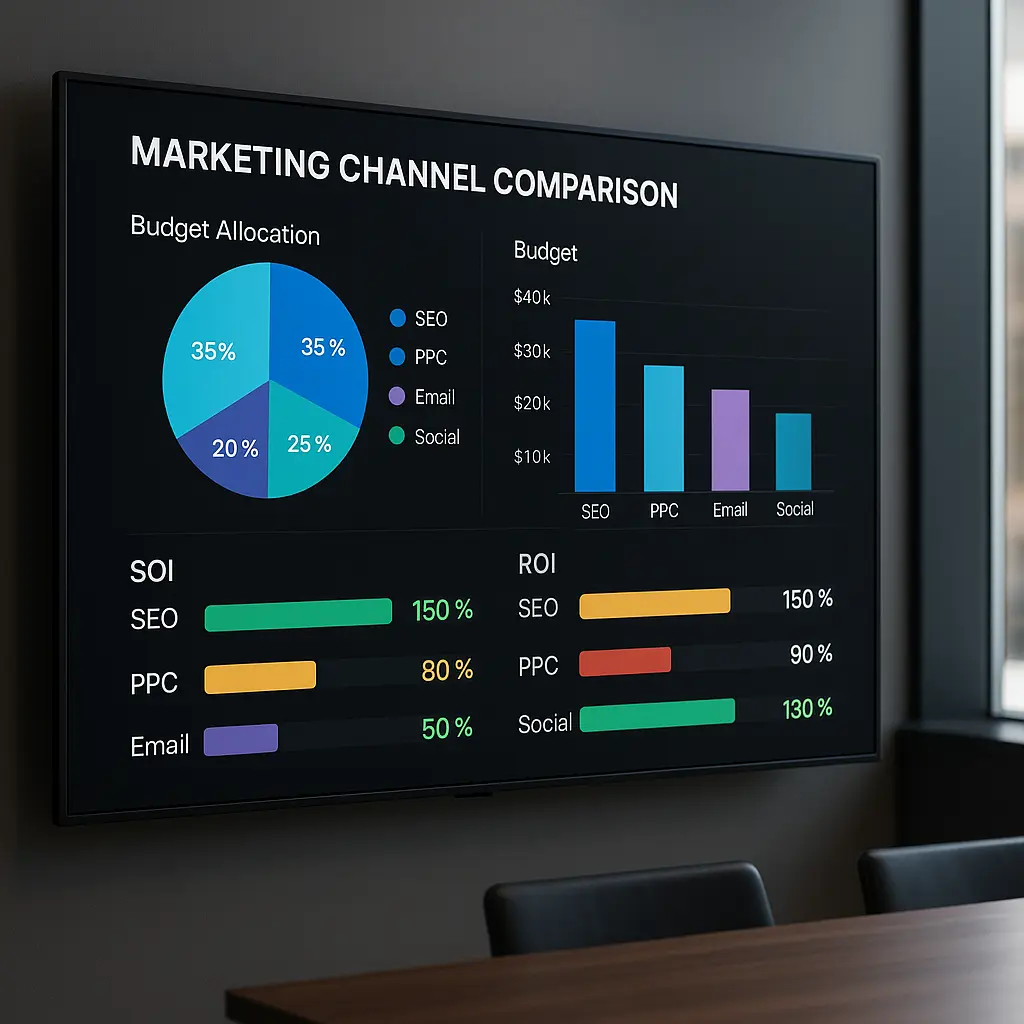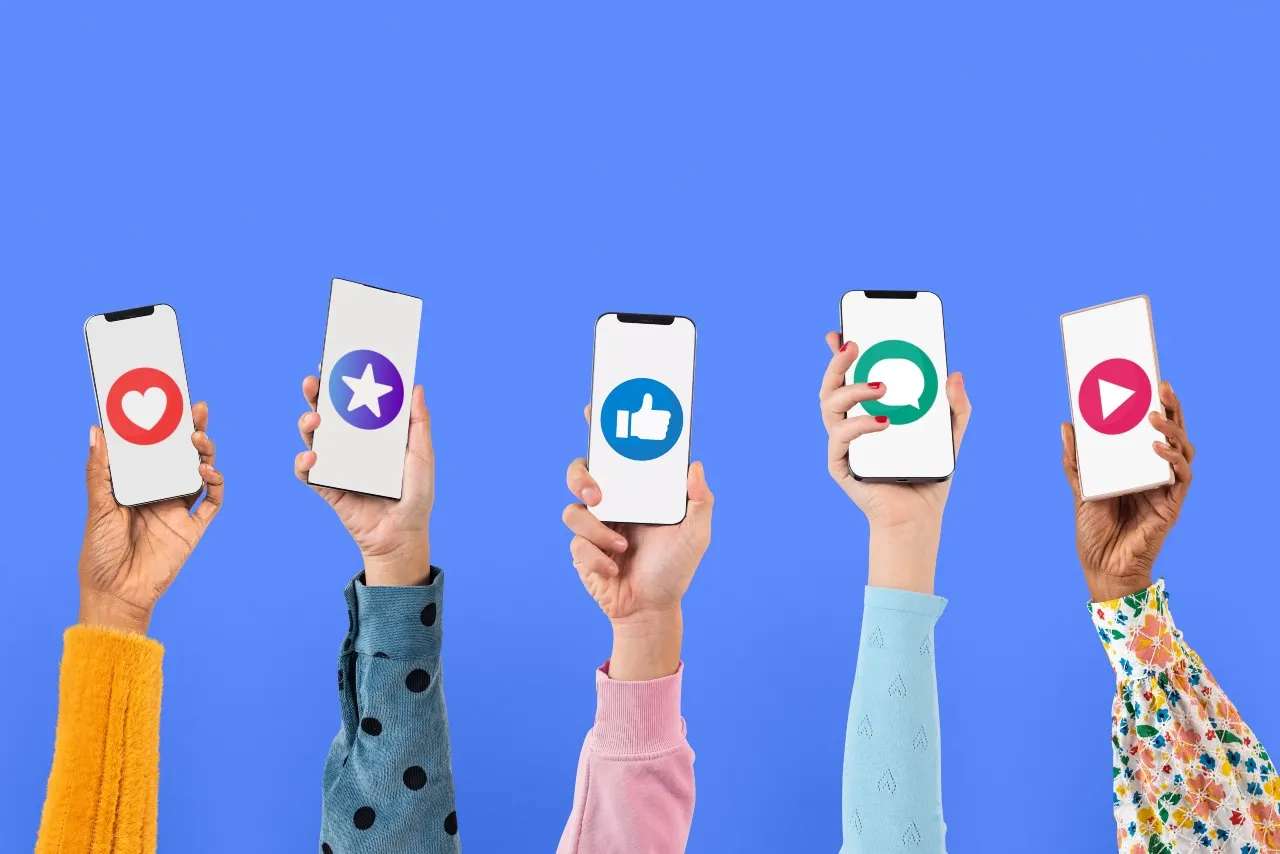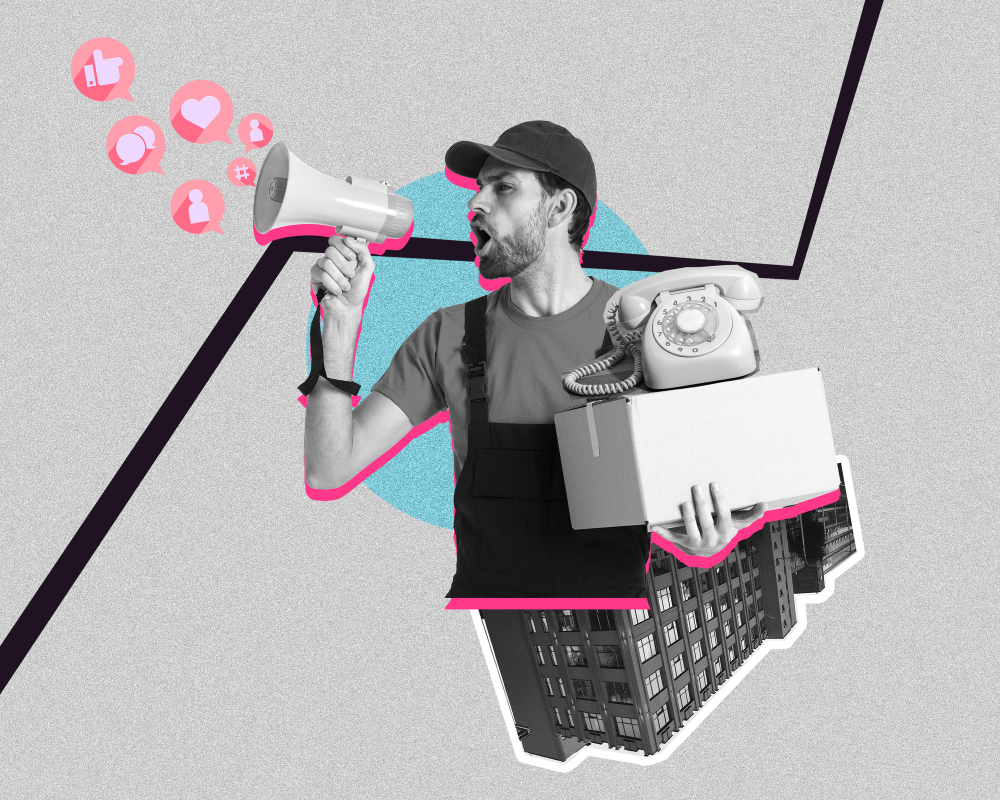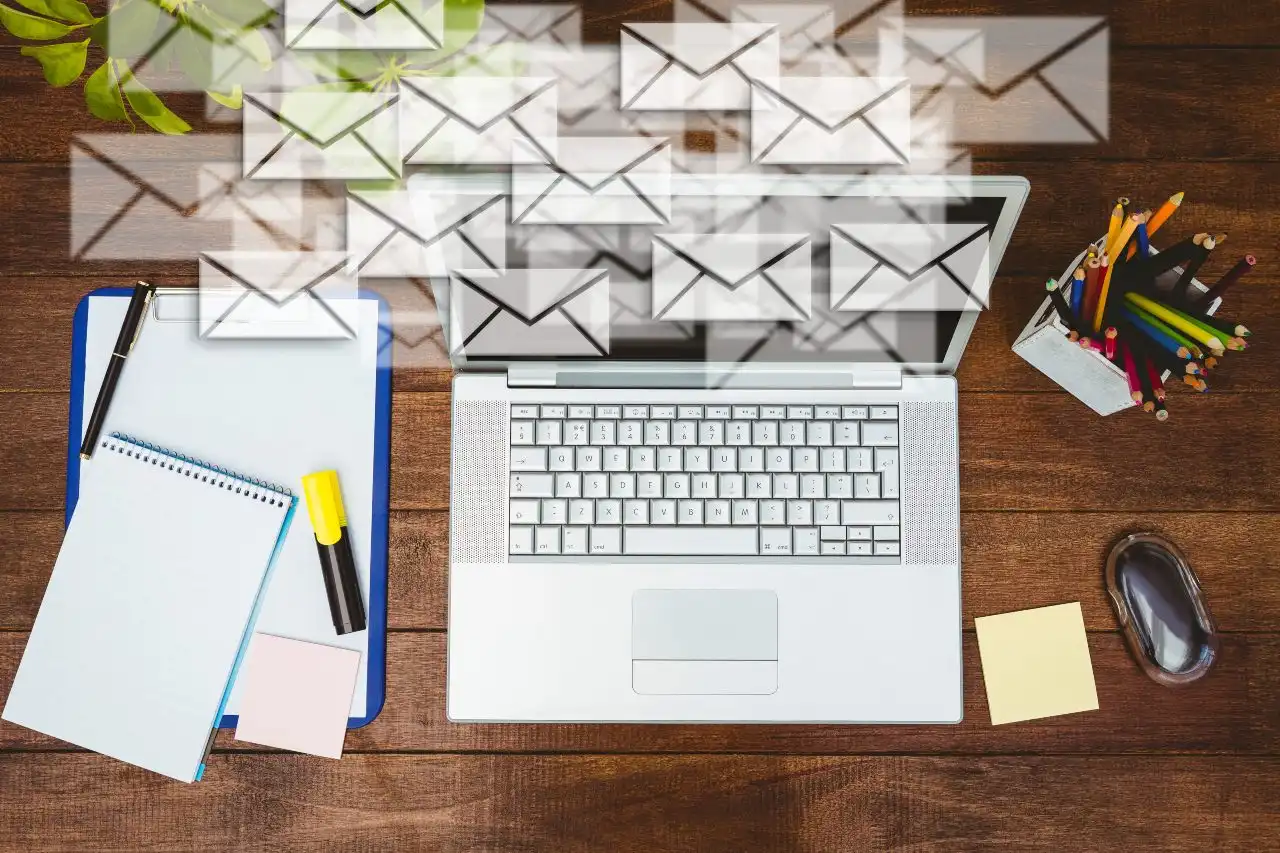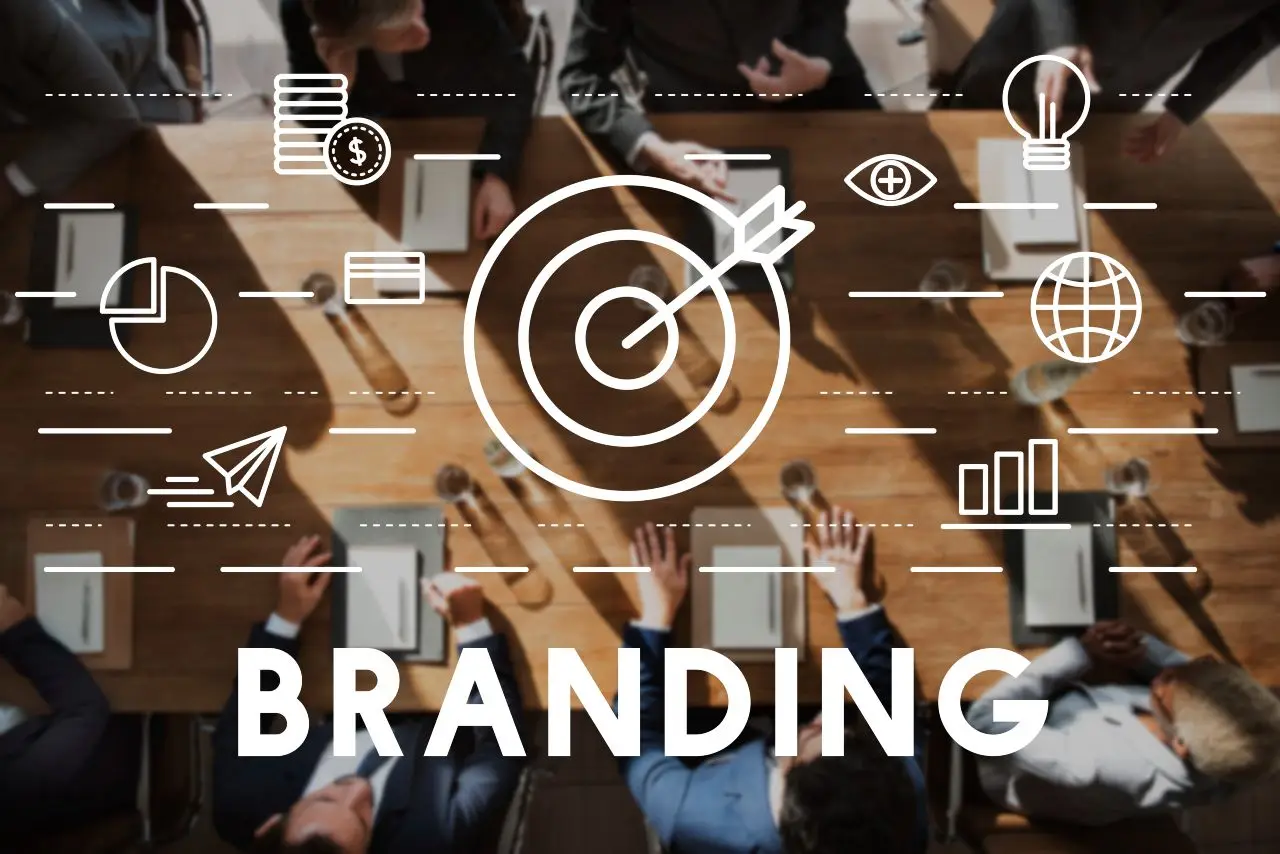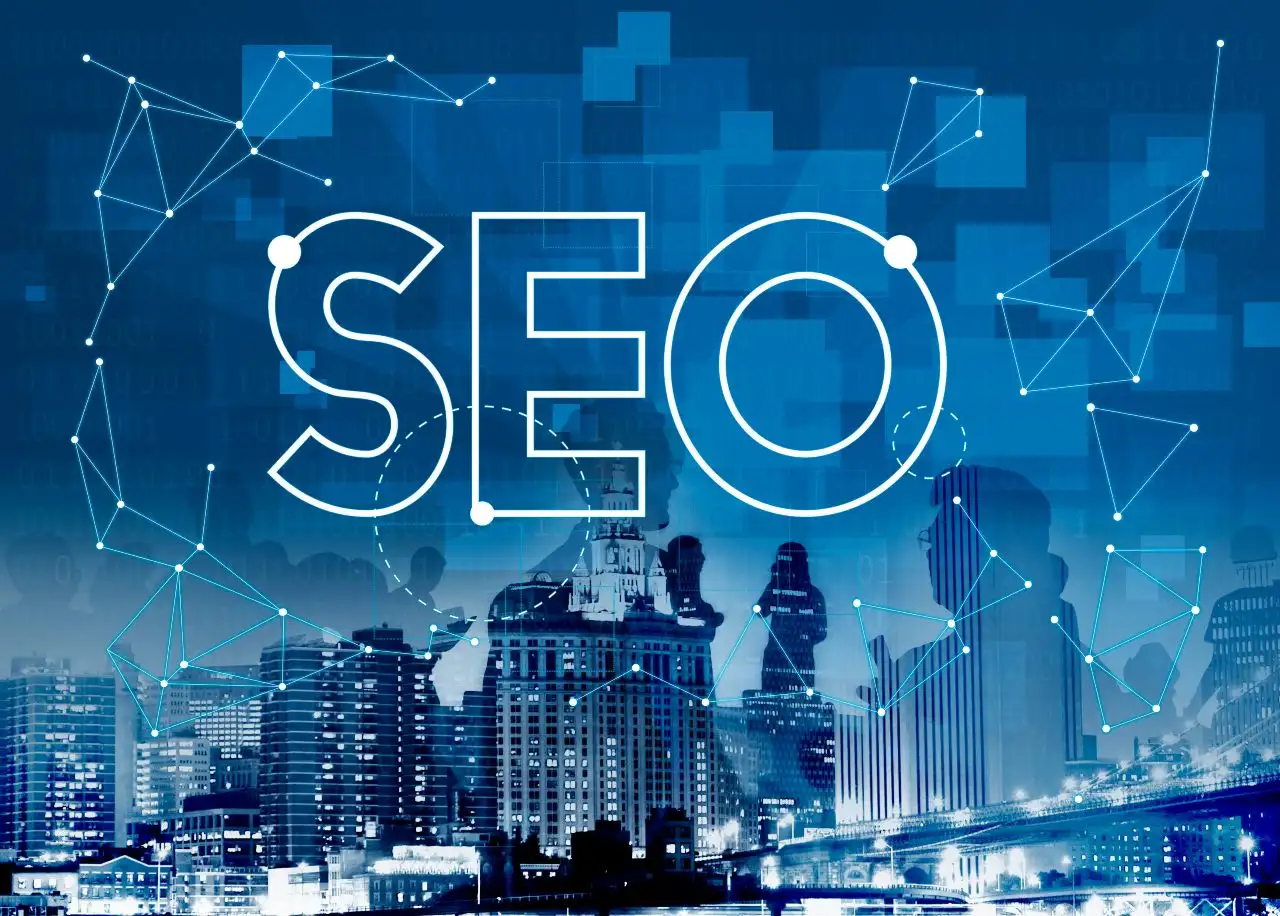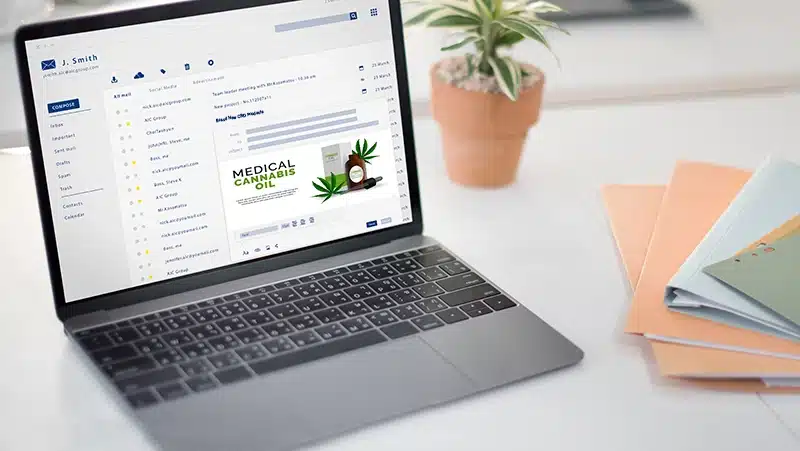Struggling to fill your sales pipeline? You’re not alone.
Despite the growing dominance of social media and paid ads, email marketing remains 40 times more effective at acquiring customers than Facebook and Twitter. Yet, many businesses fail to harness its full potential.
If you’re not tapping into email marketing because you’re not sure how to create a successful campaign, you’re missing out—and your potential customers are going straight to your competitors.
But what if you could transform your email strategy into a lead-generation powerhouse?
In this article, we’ll explore key strategies and techniques for effective email marketing B2B lead generation, the most important KPIs you should track, and some common challenges and future trends.
What is Email Marketing B2B Email Lead Generation?
Email marketing for B2B lead generation is about capturing the attention and building connections with decision-makers and stakeholders within other businesses via email, and later on, hopefully converting them as clients.
Unlike B2C email marketing, which often targets individual consumers and focuses on emotional appeal, B2B email campaigns focus on creating value. This can be delivered through educational content, case studies, and personalized offers that address the unique challenges of the target business.
The goal isn’t just to generate immediate sales but to establish meaningful relationships that nurture trust and drive long-term partnerships.
Why Email Marketing Works for B2B Lead Generation
Email marketing outperforms other channels for B2B lead generation, and for a good reason.
For example:
- 77% of B2B buyers prefer to be contacted via email (double the rate for other channels).
- 83% of B2B marketers prefer email to generate qualified leads. That’s because, with email, you’re not waiting for potential leads to find you—you’re reaching out to them directly with a personalized message tailored to their specific needs and pain points.
- With a 3.2% click-through rate (CTR)—higher than the 2.1% average in B2C—it’s clear that business professionals are more likely to interact with relevant, solution-oriented content delivered via email.
- Email marketing offers an incredible return on investment, with an average ROI of $42 for every $1 spent. So, whether you’re sending a targeted campaign to 50 leads or a newsletter to 5,000, the potential returns far outperform the costs.
8 Strategies for Effective B2B Email Marketing Lead Generation
To maximize the potential of B2B lead generation email marketing, it’s essential to go beyond simply sending emails.
Let’s break down the 8 actionable strategies that will help you engage decision-makers and drive conversions with confidence.

Create Effective Lead Magnets
To attract qualified leads, first, you need an irresistible lead magnet. This is any type of valuable, gated content—like eBooks, industry reports, whitepapers, webinars, or quizzes that can entice potential subscribers to share their contact details.
To maximize conversions:
- Keep opt-in forms simple with up to 2-3 fields to collect the most essential information and minimize friction.
- Use landing pages instead of pop-ups for sign-ups, as they boast a 160% higher conversion rate.
Example:


Segment Your Audience Strategically
Dividing your list based on key characteristics ensures your content resonates with recipients. This will help you improve engagement rates and build stronger connections with your leads.
Here are some segmentation methods to consider:
- Industry: Tailor messaging to address sector-specific challenges and opportunities.
- Job role or title: Focus on decision-makers like managers, directors, or C-suite executives who influence purchasing decisions.
- Location: Tailor your emails to regional or local preferences, time zones, and cultural nuances. For example, you can schedule email delivery to align with recipients’ work hours or reference relevant events or regulations in their area.
- Pain points: Identify common challenges your audience faces and provide solutions tailored to their needs.

Use Compliant Lead Lists
If you opt to purchase a lead list, prioritize compliance and quality. Non-compliant lists can harm your sending domain and damage your reputation. To avoid these pitfalls:
Pro Tip:
A targeted email list is about quality over quantity. Focus on building or purchasing lists that align with your ideal customer profile to ensure your campaigns are reaching the right people.

Personalize and Customize
Did you know that personalized emails can improve click-through rates by up to 14% and conversions by 10%?
For B2B, where decision-making often involves multiple stakeholders, tailored messaging can make all the difference and foster a more meaningful connection. Here are some B2B lead nurturing email examples:
- Address recipients by name: “Hi Sarah” immediately feels more engaging than a generic “Dear Customer.”
- Tailor content to the recipient’s industry or role: For instance, “Here’s how CFOs in manufacturing can improve budget forecasting” can have a bigger impact than a one-size-fits-all message.
- Suggest actionable next steps: Propose specific meeting dates like, “Would Tuesday or Thursday next week work for a quick 15-minute chat?”
Pro Tip:
To create more impactful emails, you can gradually incorporate more advanced personalization, such as referencing recent interactions or suggesting solutions tailored to their specific challenges. To offer personalization at a scale, you can use tools like ActiveCampaign, HubSpot, Mailchimp, Reply.io., and Outreach.io.

Craft Compelling Subject Lines and Preview Text
Your email subject line is the digital equivalent of a first impression—it determines whether your message is opened or ignored. And creating the right subject line can save your email from being lost in a recipient’s flooded email inbox.
Here’s how to create subject lines that stand out and entice your recipients to engage.
- Keep it short and sweet: B2B recipients are busy, often skimming their inboxes for the most relevant messages. Subject lines under 50-60 characters perform best as they are visible on all devices.
- Example: “Unlock Effortless Efficiency – Here’s How”
- Be clear and specific: B2B professionals value efficiency, so avoid ambiguity. State the purpose of your email clearly and make it immediately relevant to their needs.
- Example: “Cut Your IT Expenses – Tailored Solutions for Your Business”
- Personalize for impact: Including the recipient’s name, company, or industry in the subject line makes your email feel tailored and relevant, which can lead to higher open rates.
- Example: “John, Let’s Improve Your SaaS Conversions by 30%”
- Use questions to spark curiosity: A well-crafted question can pique interest and encourage the recipient to explore further. Make it relevant to their challenges or goals.
- Example: “Is Your Marketing Strategy Missing This Crucial Element?”
- Highlight benefits: Focus on what the recipient stands to gain. Emphasize value or outcomes, such as increased efficiency, reduced costs, or improved results.
- Example: “You Could Double Your Leads in Just 30 Days, Interested?”
- Avoid clickbait: While enticing subject lines are important, overpromising or using misleading content can damage your credibility. Be honest and ensure your subject line reflects the content of your email.
- Example to avoid: “You’ve Won a Free Consultation!” (Unless they really have.)
- Don’t forget preview text: Preview text (the snippet that appears alongside the subject line) is an often-overlooked opportunity. Use it to complement your subject line with more context or reinforce the benefit offered in your email.
- Example pair: Subject Line: “Ready to Save Time on Hiring?” Preview text: “Discover how our platform connects you with top talent in just days.”
Pro Tip:
No single subject line strategy works for every audience. Use A/B testing to compare different approaches and analyze the results to identify what works best. Tools like Mailchimp and HubSpot offer built-in testing features to optimize your campaigns.

Offer Value-Driven Content
In B2B email marketing, decision-makers are far more likely to engage with emails that provide genuine value and solve their pain points. For example, if your leads struggle with time management, offer a guide on optimizing workflows. Or, if compliance is a critical factor for them, create a report highlighting best practices for staying ahead of regulations.
This way, you can share various types of content, including:
- Whitepapers: These in-depth reports demonstrate your expertise and provide valuable information in the form of industry insights, analysis, and solutions.
- Example: A SaaS company might share a whitepaper titled “Top 5 CRM Trends Transforming Customer Retention in 2024.”
- Case Studies: Real-life success stories are incredibly compelling in the B2B space. Case studies showcase how your product or service has solved challenges for other companies, offering social proof and demonstrating your value.
- Example: A case study showing how your software improved efficiency by 25% for a client in the manufacturing industry.
- Webinars: Interactive and educational, webinars allow you to dive deep into topics while engaging with potential leads in real time. This can put you in the spotlight as a leader and a reliable advisor for your prospects.
- Example: A webinar titled “How AI Is Reshaping Marketing Analytics” targeting CMOs and marketing directors.
Pro Tip:
Use drip campaigns to nurture leads, starting with broad educational resources and progressing to detailed, actionable solutions. Tailor content to specific audience segments. For example, send an ROI calculator to CFOs and a workflow efficiency checklist to operations managers. And finally, you can encourage further engagement by linking to content hubs, upcoming webinars, or scheduling demos.

Optimize Your Call-to-Action
Your call-to-action (CTA) is the driving force behind conversions in email marketing. It’s the moment when your recipient decides whether they want to take the next step.
To ensure a higher success rate, you can:
- Make your CTA action-oriented: Your CTA should clearly state what action the recipient should take and how it benefits them. Use strong, direct verbs like “Download,” “Register,” or “Learn.” Focus on the value they’ll gain by clicking.
- Keep it simple: Avoid overwhelming your audience with multiple CTAs that serve different purposes. Instead, focus on a single, clear goal for your email. You can include multiple CTA buttons, but they should all guide the reader toward the same action, ensuring a cohesive and streamlined message.
- Use eye-catching design: A well-designed button for your CTA can make it stand out and boost click-through rates. Ensure the button contrasts with your email’s background and is easy to spot.
- Leverage urgency: Encouraging immediate action with time-sensitive language can improve conversions. Phrases like “Limited Spots Available” or “Offer Ends Friday” create a sense of urgency.
- Highlight value: Make it clear why the recipient should take action. Explain what’s in it for them and how it will address their pain points or solve a problem.
A/B Testing Your CTAs
Testing is key to optimizing your CTAs for better performance. With A/B testing, you can experiment with:
- Copy: Test different phrasing, such as “Start Your Free Trial” vs. “Try It Free Today.”
- Placement: Position your CTA in different areas of the email to see where it generates the most clicks.
- Design: Experiment with button colors, shapes, and font styles to identify the most visually appealing option.

Time Your Emails Right
When it comes to B2B email marketing, timing can be just as important as content. However, finding that perfect timing requires a good understanding of when your audience is most likely to open and read your emails.
In the business world, email inboxes fill up quickly. To maximize engagement, you should:
- Aim to send emails in the morning hours (between 8:00 AM and 10:00 AM) in your prospects’ time zone. That’s proven to yield the best results as professionals check their inboxes early in the day before diving into their tasks.
- Send out emails on Tuesday, Wednesday, or Thursday, as these are typically the most productive days for B2B professionals. Avoid Mondays, when inboxes are flooded, and Fridays, when attention shifts to the weekend.
- Achieve the right frequency and consistency. You want to avoid being too spammy but also not be forgotten. For most B2B campaigns, one to two emails per week works well.
Note: While these guidelines generally work for B2B audiences, the ideal timing can vary based on your specific audience. Always test your emails to identify the times and days that yield the highest engagement for your unique recipient list. Use the data to fine-tune your strategy and adapt to your audience’s preferences.
Pro Tip:
Take advantage of seasonal trends and high-demand periods for your industry. Sending emails with special offers or exclusive insights during these peak times can boost your lead-generation efforts. Also, for even better timing, consider sending a follow-up email immediately after a prospect downloads a whitepaper or visits your pricing page while their interest is high.
Advanced Techniques to Boost B2B Email Lead Generation
While we covered the essentials for optimizing your B2B email lead generation efforts, there are a few extra tips and tricks you can utilize to help you stand out in crowded inboxes.
Using Behavioral Data for Triggered Emails
Triggered emails, sent based on user actions like downloading a whitepaper, signing up for a newsletter, or visiting a landing page, can boost engagement rates as they deliver timely and relevant content.
These automated responses capitalize on high-interest moments, guiding prospects further down the funnel. For example, if a lead views your demo page, a follow-up email offering to schedule a demo keeps the conversation going.
Also, monitoring metrics such as CTRs and lead-to-close ratios can help you understand if your triggered emails remain effective and aligned with your audience’s needs.
Leveraging AI and Automation for Lead Scoring
Did you know that automated email campaigns can generate up to 320% more revenue than non-automated campaigns? Additionally, automated emails have a 119% higher CTR than regular emails.
Automation can revolutionize your lead generation efforts by streamlining lead scoring based on specific actions, such as email clicks or visits to your pricing page.
More Automation Use Cases
- Automated workflows can be set up to send welcome emails immediately after signup, ensuring instant engagement.
- Drip campaigns can guide leads through the sales funnel by delivering timely, relevant content based on their stage in the buyer’s journey.
- Re-engagement campaigns can automatically target inactive leads with personalized incentives, like discounts or exclusive offers.
AI takes this further by identifying behavioral patterns and triggering personalized follow-ups. For instance, if a lead visits your pricing page multiple times, AI can send a tailored email offering a demo or consultation, ensuring you engage while interest is fresh.
Advanced AI Features
Tools like ActiveCampaign take automation a step further with features like predictive sending, which uses AI to determine the optimal time to send emails based on each recipient’s engagement patterns. This ensures your emails land in their inbox at the moment they’re most likely to open and act, boosting engagement rates significantly.
Integrating Interactive Elements
Adding interactive elements to your emails can boost reader engagement and drive more conversions. Features like polls, quizzes, or video previews encourage recipients to actively participate and can even guide them toward personalized solutions.
Interactive content also creates opportunities for data collection and personalization. Tools like Typeform or SurveyMonkey make it easy to integrate these elements, turning your emails into dynamic experiences that drive meaningful interactions.
Retargeting via Email
If a recipient opened your email but didn’t click the CTA, you can re-engage them by following up with a new angle (e.g., offering additional insights or exclusive content).
Similarly, if someone downloaded a resource but didn’t convert, send an email highlighting a related webinar or case study to guide them further down the funnel.
Use segmentation tools to create targeted campaigns based on user behavior and refine your approach by monitoring your performance metrics.
B2B Email Marketing Best Practices
Ensuring your emails land in recipients’ inboxes is critical for effective B2B email marketing. Here are some best practices that can help you maintain a strong sender reputation:
- Keep a healthy email list: Regularly clean your email list by removing unengaged contacts, invalid addresses, and spam traps. This will improve your sender reputation and ensure your emails reach the right audience.
- Authentication and compliance: Authenticate your emails using SPF (Sender Policy Framework) and DKIM (DomainKeys Identified Mail) to confirm legitimacy and reduce the risk of being flagged as spam. Additionally, ensure compliance with laws like CAN-SPAM and GDPR, which mandate clear opt-ins, opt-outs, and transparent email practices.
- Avoid spam triggers: Steer clear of spammy language, excessive use of caps, emojis, or misleading subject lines. Focus on clear, professional messaging to keep your emails from landing in junk folders. To make it easier, you can use tools like ActiveCampaign that have built-in spam checkers.. These tools help identify potential issues—such as overuse of exclamation marks or other red flags—before you send your email, ensuring it passes spam filters and reaches your audience.
Feeling overwhelmed by the complexities of crafting an effective email marketing strategy? Remember, you can always outsource email marketing to an expert. This way, you can get help with improving your existing strategy or even build an email marketing campaign from the ground up.
Measuring Success: Key Metrics for B2B Email Marketing
KPIs help you understand how your email campaigns perform and where you can improve.
Some vital key metrics you should keep track of include:
- Open rate: Measures how many recipients opened your email. A low rate usually indicates your emails need adjustment (whether in the copy, subject line, or send times).
- CTR: Tracks the percentage of recipients who clicked on a link within your email. Low CTRs suggest a need for better CTAs or more engaging content.
- Conversion rate: Indicates how many recipients completed the desired action, like signing up for a webinar.
- Bounce rate: Tracks the percentage of emails that couldn’t be delivered to recipients. A high bounce rate may indicate issues with your email list, such as outdated or invalid addresses, or that your messaging isn’t resonating with your target audience.
- Unsubscribe rate: Indicates the percentage of recipients who opt out of receiving future emails. A rising unsubscribe rate could signal issues with the relevance, frequency, or tone of your emails.
- ROI: Helps measure the financial success of your campaigns and prioritize high-impact strategies.
Leverage A/B and Multivariate Testing
A/B testing is a powerful tool for optimizing email performance by comparing variations of a single element, like subject lines or button colors. Multivariate testing goes further, allowing you to test multiple changes simultaneously, such as layout and CTA phrasing.
Pro Tip:
Treat your metrics as a roadmap, not a final destination. Continuous testing and refinement based on data-driven insights will ensure your email campaigns stay relevant, effective, and aligned with your lead generation goals.
Common Challenges and How to Overcome Them
Email marketing for B2B lead generation is powerful, but it’s not without its challenges. Here’s how to tackle them head-on.
Declining Open Rates
As inboxes overflow with emails, standing out becomes increasingly difficult. Subject lines that lack clarity or relevance are often the main culprits.
Solution
Focus on creating concise, personalized subject lines. Experiment with A/B testing to identify what resonates with your audience. Additionally, you can optimize send times to ensure your emails arrive when recipients are most likely to check their inboxes, such as mid-morning on weekdays.
Engagement Fatigue
Your audience might become disengaged if they feel bombarded with emails or if your content lacks value.
Solution
Segment your audience and send tailored, high-value content that aligns with their interests or pain points. Also, aim to find the golden mean when it comes to email frequency and introduce engaging elements like polls or quizzes to keep things fresh.
Low Click-Through Rates
Even if recipients open your email, they may not engage further if the content or CTAs don’t capture their attention.
Solution
Refine your CTAs to be action-oriented and benefit-focused. Ensure your email layout is clear, with an eye-catching CTA button. Testing different designs and placement can also boost CTR.
Deliverability Issues
Poor email deliverability can prevent your campaigns from reaching your audience at all, often due to a bad sender reputation or spam triggers.
Solution
Maintain a clean email list by removing unengaged contacts regularly. Use authentication protocols like SPF and DKIM to build trust with email providers and avoid spammy language or excessive use of caps and emojis.
Measuring and Acting on the Wrong Metrics
Focusing on vanity metrics, like total sends, rather than actionable data, like conversion rates, can mislead your strategy.
Solution
Track KPIs that align with your goals and regularly analyze them. Based on your findings, you can make data-driven adjustments to improve your campaigns.
Future Trends in B2B Email Marketing for Lead Generation
The future of B2B lead generation email marketing is shaped by emerging trends in AI, automation, and other technological advances. Here are some of the main predictions related to these trendsetters:
- AI personalization will become the standard, making emails feel more one-on-one, even when sent to thousands of recipients.
- Advances in predictive analytics will transform how businesses approach email marketing, allowing for smarter targeting and higher ROI with minimal manual input.
- As interactive content becomes more accessible, businesses will leverage these tools to make emails more engaging, fostering stronger connections with leads.
- Omnichannel strategies will redefine lead generation, with email serving as the central hub in a cohesive, multi-touchpoint approach. For example, an email campaign can direct leads to a webinar, while follow-up reminders are sent via SMS.
Conclusion
Email marketing for B2B lead generation is about more than sending emails—it’s about crafting strategies that engage, nurture, and convert. Email B2B marketing statistics show that well-targeted and personalized campaigns consistently deliver higher engagement and conversion rates. With the right techniques, you have the power to transform your emails into tools for driving business growth.
Ready to unlock the full potential of your email campaigns? At Scopic Studios, we offer email marketing services that deliver measurable results. Whether you need help optimizing your current campaigns or building a lead generation powerhouse from scratch, our experts are here to guide you every step of the way.
Contact us today to take your B2B email marketing to the next level!
About Creating Email Marketing B2B Lead Generation Strategies Guide
This guide was written by Veselina Lezginov and reviewed by Kristina Poghosyan, Marketing Lead at Scopic Studios.
Scopic Studios delivers exceptional and engaging content rooted in our expertise across marketing and creative services. Our team of talented writers and digital experts excel in transforming intricate concepts into captivating narratives tailored for diverse industries. We’re passionate about crafting content that not only resonates but also drives value across all digital platforms.

